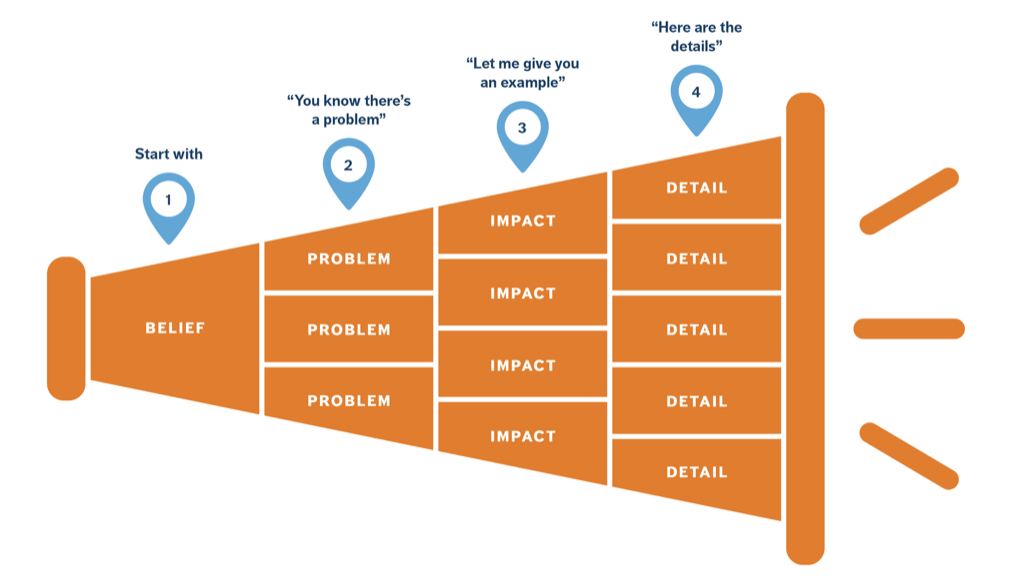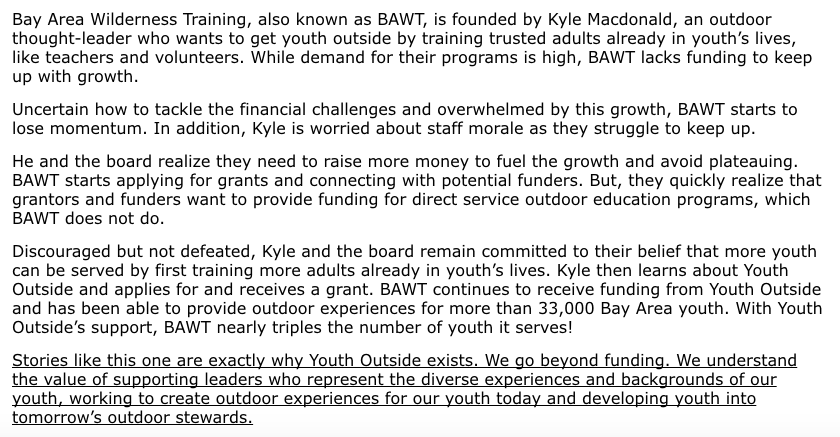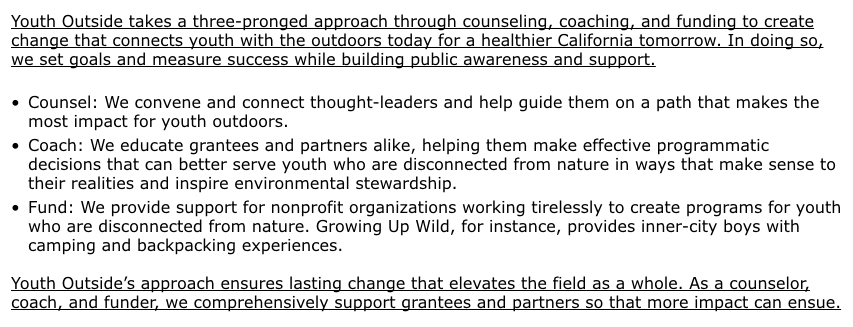Your Organization’s Story: The Details
Posted by Jennie Winton on June 21st, 2016
Posted in Blog, Nonprofit Branding, Nonprofit Communications, Nonprofit Messaging Tags: 10 Minute Message, communications, key messages, Minute Message Model, Nonprofit Communications, Nonprofit Messaging
“Tell me about your organization.”
This command often strikes fear and freeze in the minds of nonprofit staff and board. Not quite sure how to summarize all the good done by their organization they begin a recitation of programs, facts and figures.
Instead, we recommend you begin with a high-level overview—your Belief Message—driven by a deeply held value of your organization. Next, you should introduce the problem you exist to solve—a Problem Message. And then you should share an anecdote—an Impact Message—that illustrates the impact of your work.
Those programmatic details you may be using to introduce your organization are important messages, but they shouldn’t be the first things that you say. We call them Detail Messages because we believe they only have an impact if you use them last, rather than first.
Here’s a reminder of how the Minute Message Model is structured.

Detail Messages are intended to:
- Detail how you achieve results
- Explain programmatic details
- Name operational specifics
- Invite the reader/listener’s participation
The good news is that you likely already have these messages. You are probably well versed in your various programs, projects, and initiatives, the services you offer, and the communities in which you work. You may have already detailed some of these things for your website or other printed collateral.
For your Detail Messages to serve you most effectively, however, these details must be followed by an explanation of how they support your overall vision. What is the benefit of this project, program, or approach? This is key in reminding your listener of what you stand for.
Let’s revisit Mission Minded client, Youth Outside, once more in this last post in our 4-part Minute Message Model series. Below, we’ve shared their Belief Message that introduces them in a concise way, a Problem Message that explains one of the problems their work solves, and an Impact Message anecdote that illustrates the impact of their work. We’ve completed the series with a Detail Message that details how they accomplish results. The underlined portions of the Detail Message reinforce why this approach supports their overall vision.
Belief Message

But you know, there’s a problem…
Problem Message

Let me give you an example…
Impact Message

Here’s how we made that happen…

Do you see how the details included in the Details Message wouldn’t be as impactful if this was the first or only information you received about Youth Outside? The detail alone could overwhelm, and would likely result in disinterest rather than engagement.
Put simply, you can’t expect your listeners to be interested in how you do what you do if you haven’t given them the opportunity to connect with and understand why it matters.
When you and your colleagues all use your messages—including your Detail Messages—consistently and strategically, you’ll be efficient and effective advocates for your organization, and be well on your way to securing the support you need to achieve your mission.
We hope you’ve found the Minute Message Model blog post series helpful in thinking about your own organization’s communications. If you’ve missed the other posts in the series, check out our posts on the Belief Message, Problem Message, and Impact Message.
Jennie Winton is a Founding Partner of Mission Minded, a 25-year marketing veteran sought for her expertise in branding nonprofit organizations, and a one-on-one leadership coach.
See all posts by Jennie Winton